The Kotumsar or Kutumsar Caves are located 10 kilometres into the Kanger Valley National Park in Chattisgarh. At first, the caves were named Gopansar Caves because they were hidden, but later, they were changed to Kutumsar Caves because they were situated near Kutumsar Village. The caves were officially explored in the 1950s by a geography professor, Dr. Shankar Tiwari. It is 330 meters long with a width of 35 meters and exhibits limestones formed millions of years ago. While visiting the cave, tourists can learn about the formation of the limestone and explore the unique biodiversity that it has to offer.
Quick Details About Kutumsar Caves
Founded In: 1950s
Approximate Age Of The Cave: 330 million years
Location: Kanger Valley National Park, Bastar, Chattisgarh
How To Reach: By hiring a private vehicle or with your own conveyance
Nearest Airport: Maa Danteshwari Airport
Nearest Railway Station: Jagdalpur Railway Station
Best Time To Visit: October to March
How To Reach Kutumsar Caves

Photo: শরদিন্দু ভট্টাচার্য্য / Wikimedia Commons
By Air: Maa Danteshwari Airport is the nearest airport to the caves. It is approximately 32 kilometres away and is also known as Jagdalpur Airport.
By Train: The closest railway station to the caves is Jagdalpur Train Station, almost 31 kilometres away.
By Road: As the caves are part of Kanger Valley National Park, you can reach them by hiring a taxi or a motorcycle.
Suggested Read: Top Water Parks In Chhattisgarh For A Splashing Adventure
Things To Do
Here is a compiled list of things that will interest the history enthusiasts on their visit to the caves.
1. Explore Its Peculiar Biodiversity

Photo: Dante Fenolio / Wikimedia Commons / Image For Representation Only
The Kutumsar Caves are termed as one of the most biologically healthy caves. It is home to various species, such as blind fish, amphibians, and unique microorganisms. They have evolved themselves to navigate the pathway without eyesight. The cave provides shelter to numerous species of bats, some of which are in the endangered category. There is a collection of troglobites in the caves, which are known to be organisms that have adapted to live in the absence of light. These organisms have restricted ecosystems to adapt and thrive in.
2. Know About Limestone Formations
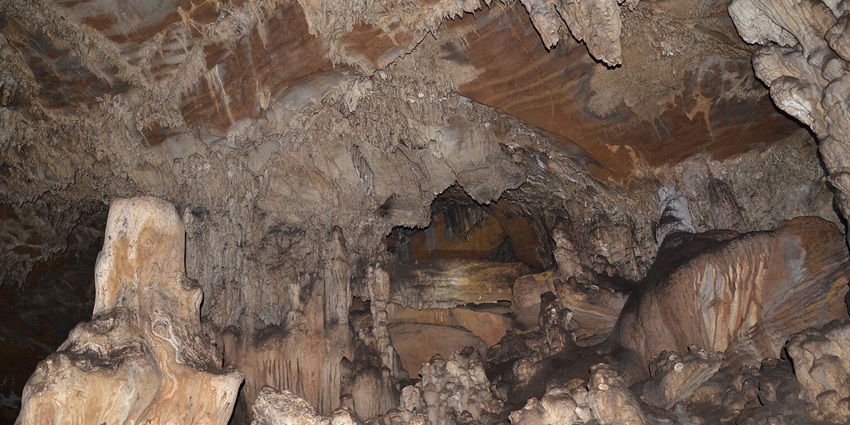
Photo: Arun Kumar Prasad / Wikimedia Commons
The caves have two types of limestone formations known as stalactites and stalagmites. The stalactites are the ones that hang from the ceiling and are formed when water with dissolved calcium carbonate drips from the roof of the cave. The stalagmites are formed as droplets with minerals dissolved in fall on the ground and deposit more calcium carbonate. The limestone is a sedimentary rock and is made mostly of calcium carbonate, which is formed in the caves when a process known as chemical weathering occurs. The formations are fragile and sensitive to human activities; hence, it is advised to just observe them.
Suggested Read: National Parks In Chhattisgarh
3. Learn About Its Cultural And Religious Significance
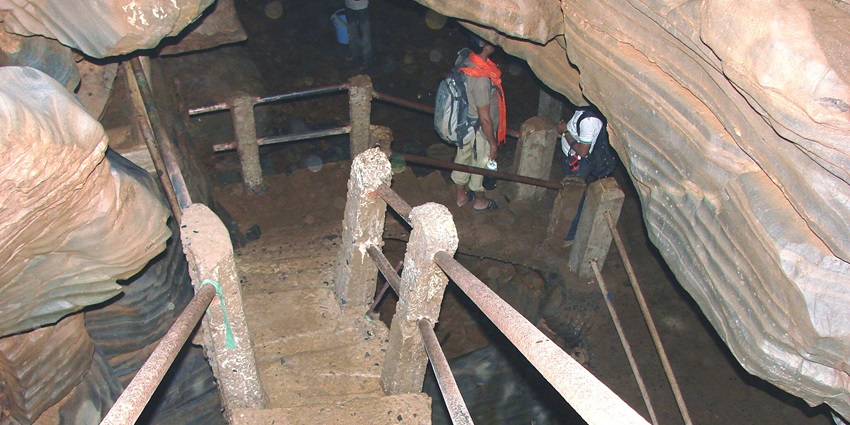
Photo: Biospeleologist / Wikimedia Commons
The caves are a part of the cultural, religious, and spiritual beliefs of several of Bastar’s indigenous tribes, such as Marias, Gonds, and Murias. They believe caves to be sacred places, associating them with the presence of deities. Various tribes of that region view the natural formation of the cave as manifestations of divine power and ancestral spirits. The tribes of Bastar hold a deep appreciation for Mother Nature and see the cave as a medium of connection with nature. Many tribal arts and folklore have been inspired by the caves’ distinctive atmosphere and rock formations.
Places To Visit Near Kutumsar Caves
Apart from visiting the caves, many other nearby tourist attractions might interest adventure enthusiasts.
1. Dandak Caves
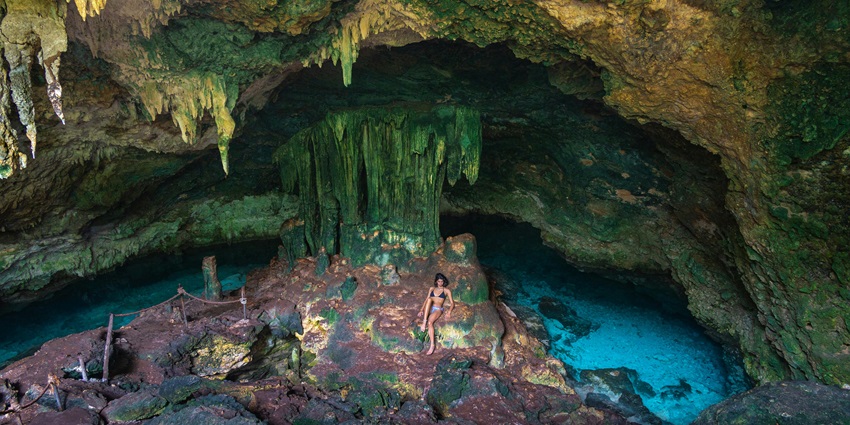
Photo: Sergey Guk / Pexels / Image For Representation Only
The Dandak Caves were founded in 1995 and are said to be almost 200 meters long with a width of 20 to 25 meters. The caves are a part of Kanger Valley National Park with two known compartments. The first and second compartments are filled with stalactites and stalagmites (types of limestone formation). Visitors have to crawl on their knees through the passage to reach the second compartment, which is small. The caves have been naturally formed and have chambers that can accommodate around 500 people. There are many small chambers interconnected with the large chambers, which are not explored much.
Distance From Kotumsar Caves: 1.2 kilometres
Timings: 9 AM – 5 PM
Suggested Read: Mahant Ghasidas Memorial Museum
2. Kailash Caves
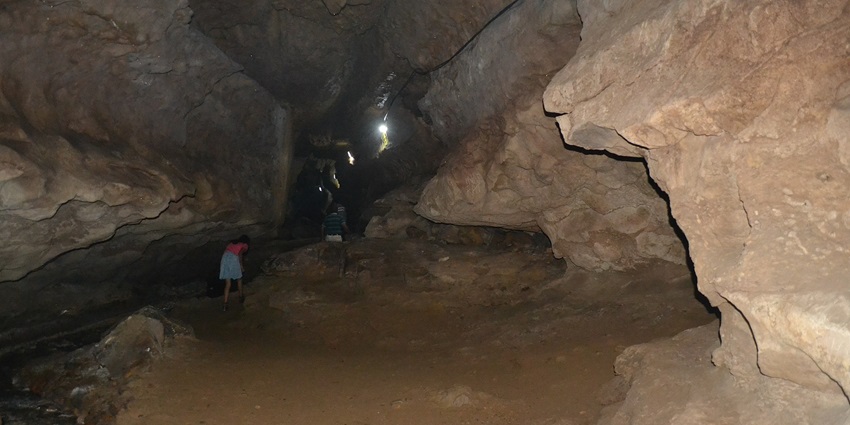
Photo: Uttaragarg / Wikimedia Commons / Image For Representation Only
The Kailash Caves are known to be one of the oldest caves in the region and is one of the three caves in the Kanger Valley National Park. It was founded in 1993 and has the limestones, which were formed millions of years ago. The cave is 200 meters long and has a width of 35 meters. It has small holes from where the water comes, narrow passages, and various chambers filled with limestone. The cave has stone structures that are similar to Shiva lingam, which many devotees relate to Lord Shiva’s presence.
Distance From Kotumsar Caves: 32.7 kilometres
Timings: 10 AM – 5 PM
3. Madarkonta Caves
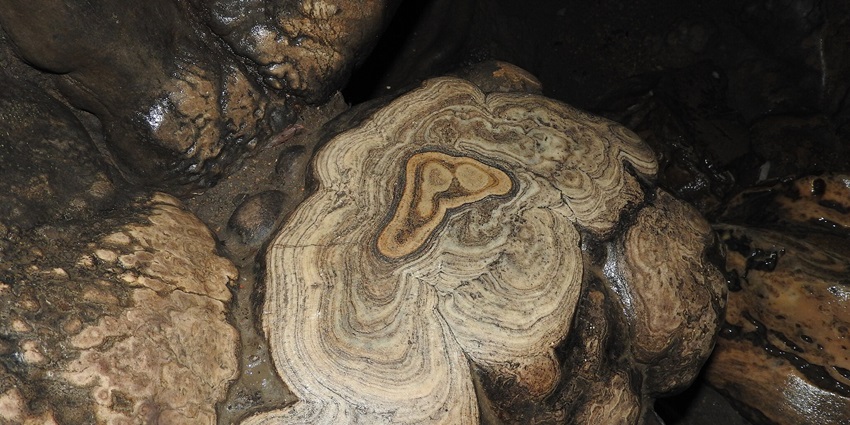
Photo: Dhruva Punde / Wikimedia Commons / Image For Representation Only
The Madarkonta Caves are situated near Jagdalpur and are one of the hidden gems in the Chattisgarh state. To reach the cave, you might have to trek for about 200 to 300 meters along a small riverbank. The region where Madarkonta Caves are located is known for its scenic beauty and rich tribal culture. The cave has limestone formations that were developed over thousands of years. It is a must-visit spot for adventure seekers, as it is in a slightly remote area. There are various species of bats and troglobites that inhabit the cave, contributing to the region’s biodiversity.
Distance From Kotumsar Caves: 10.4 kilometres
Timings: 9 AM – 5 PM
Suggested Read: Top Water Parks In Raipur To Make Splashing Memories
4. Kanger Dhara
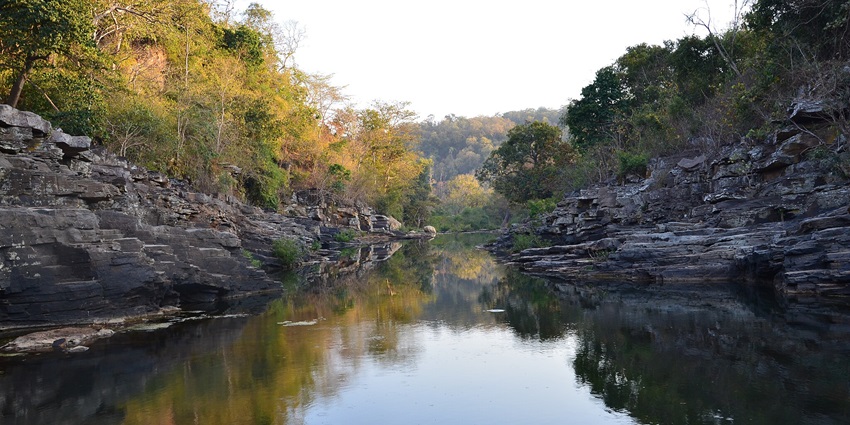
Photo: Arun Kumar Prasad / Wikimedia Commons
The Kanger Dhara is a naturally formed waterfall that flows from a height of 30 feet. The Kanger River flows over the limestone deposits leading to the formation of this scenic waterfall. It has rich flora and fauna surrounding it as it is located in a forest. While visiting this serene destination, visitors are requested to maintain the natural beauty of this place by not throwing plastic bags or bottles in the surroundings. The waterfall reaches its fullest after the monsoon season ends, attracting tourists from various parts of the country.
Distance From Kotumsar Caves: 5.1 kilometres
Timings: 8 AM – 4 PM
5. Tirathgarh Waterfalls
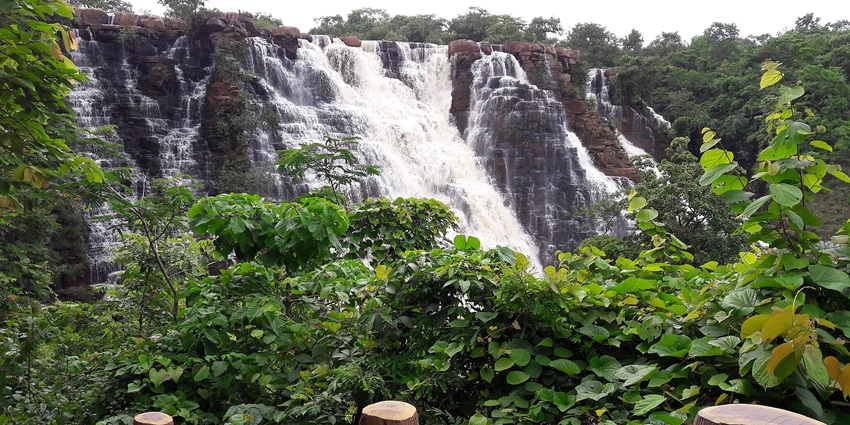
Photo: RISHI PANDEY / Wikimedia Commons
The Tirathgarh Waterfalls are one of the most visited tourist attractions of the Kanger Valley National Park. The fall flows from a height of 300 feet and divides into several small waterfalls. It is famous for being surrounded by lush green forest, and on the opposite side of the fall there are ruins of an ancient Hindu temple, which is stated to be at least 1000 years old. The waterfalls are formed by the Munga River, and between July and October, it stays at its peak. The temple near the waterfalls is treated as a pilgrimage site, and visitors can participate in eco-friendly practices.
Distance From Kotumsar Caves: 8 kilometres
Timings: 8 AM – 5 PM
Suggested Read: Party Places In Raipur
Tips For Travellers
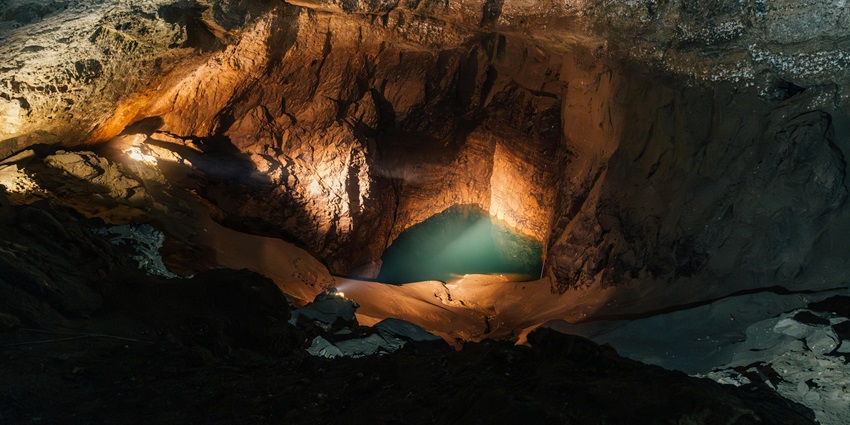
Photo: Siarhei Nester / Pexels / Image For Representation Only
There are certain important tips that travellers must keep in mind before visiting the caves.
- Wear a good-quality helmet or hat.
- Carry a few sources of light, such as a flashlight or a headlamp.
- Carry a water bottle (preferably not plastic).
- Wear comfortable shoes.
- Follow the guidelines given by the guide.
The Kutumsar Caves in Chhattisgarh are famous for their ancient limestone formations and distinct biodiversity. Located within Kanger Valley National Park, these caves offer a fascinating experience to geology enthusiasts and adventure seekers. To explore these culturally rich caves and other nearby serene attractions, book your trip to Chhattisgarh with TripXL for a hassle-free vacation experience.
Cover Photo: Theasg sap / Wikimedia Commons


 WhatsApp
WhatsApp
 Twitter
Twitter









